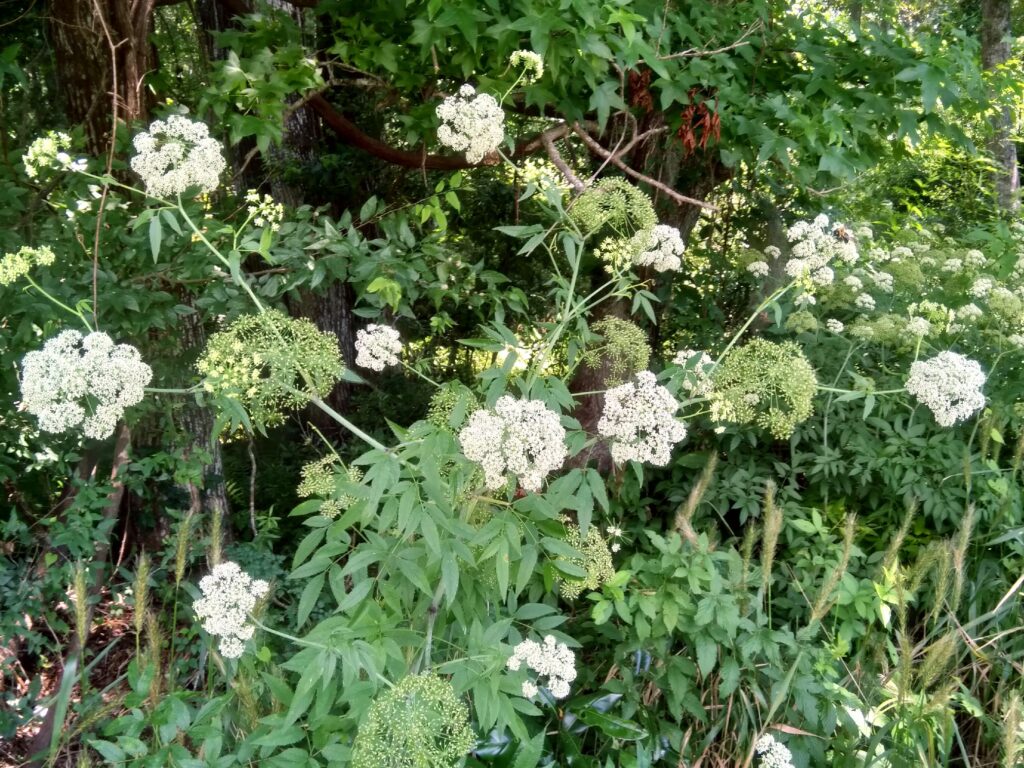
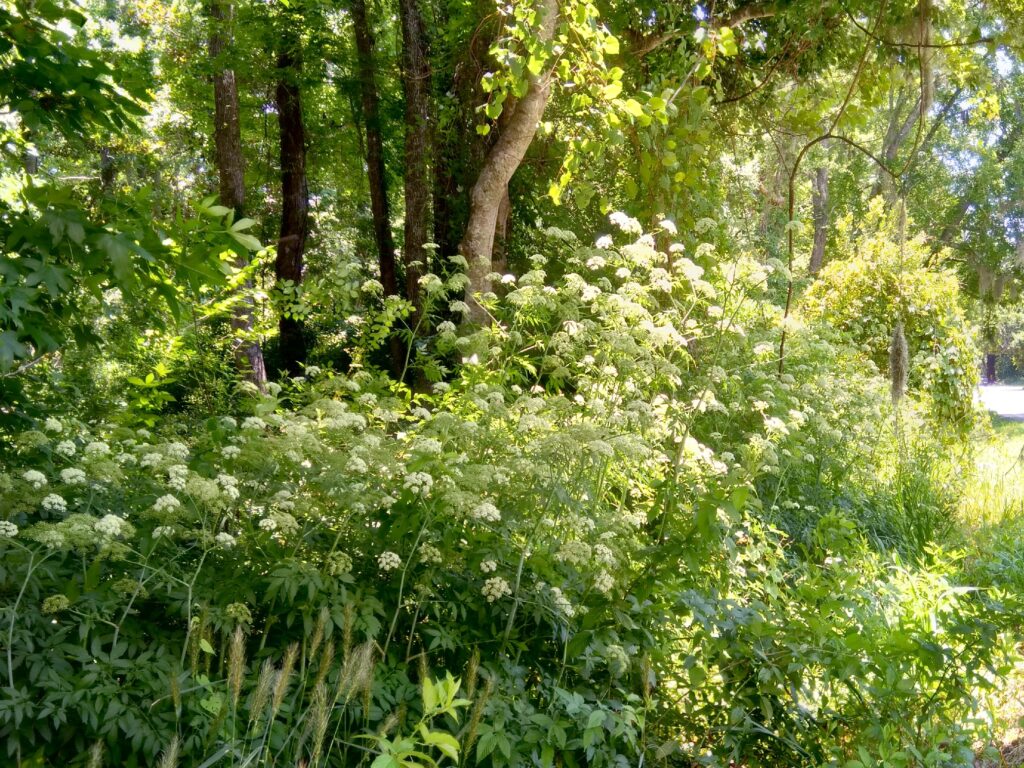
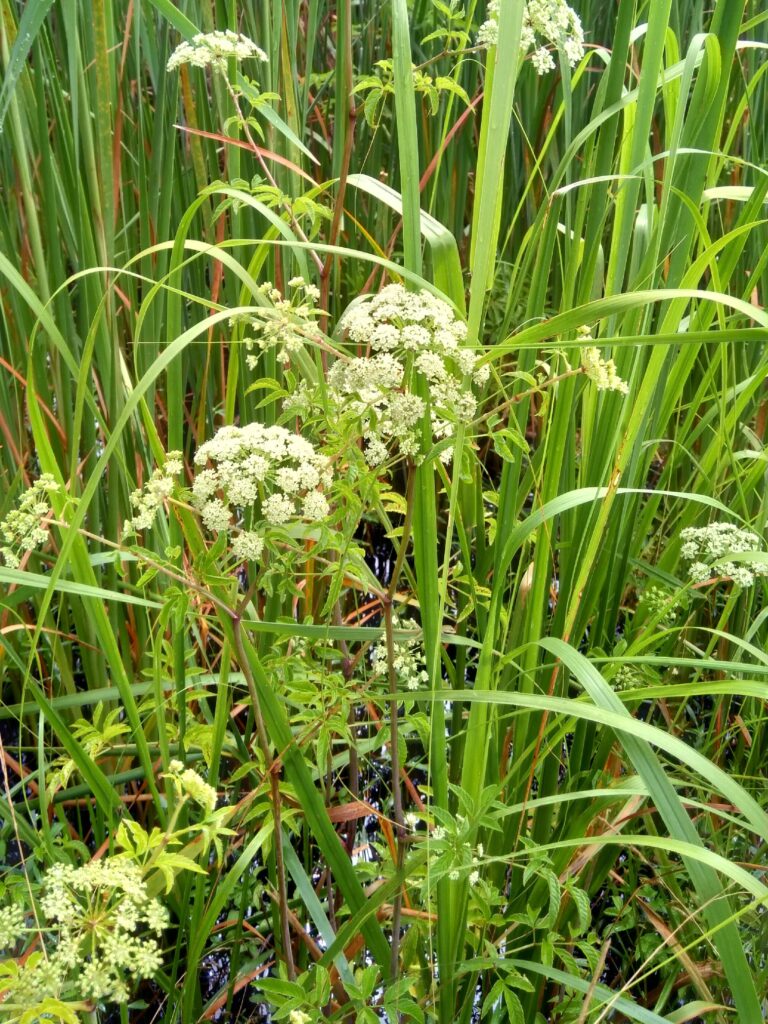
This week for Flora and Fauna Friday we have a powerfully poisonous wetland wildflower, Spotted Water Hemlock (Cicuta maculata).
Spotted Water Hemlock is a tall stringy wildflower native to the United States and found extensively throughout both the Lower Forty-Eight and the Lowcountry. It loves perpetually wet and somewhat sunny soils, usually right on the fringes of permanent wetlands. The plant can grow to a respectable eight feet in height and has large, highly divided, compound leaves. Its stem is hollow and streaked with vertical purple lines. It is rhizomatic and perennial, spreading slowly along the wetland edge and returning year after year. It blooms in early summer, producing many umbels composed of hundreds of small white flowers.
Spotted Water Hemlock’s most noteworthy characteristic is neither its size nor its flowers, it’s a chemical in its flesh called cicutoxin. This chemical is found in all parts of the plant but is most concentrated in its roots. It’s a neurotoxin and its potency has won Spotted Water Hemlock the title of most toxic plant in North America. Normally this poison wouldn’t be much of a problem for people as most folks don’t eat random plants they find growing in a ditch. However, this Hemlock is a member of the Carrot family, Apiaceae, and is similar in appearance to several edible wild plants. As a result, a case of mistaken identity with this wildflower is most often fatal. I won’t go into details but it’s an unpleasant way to go.
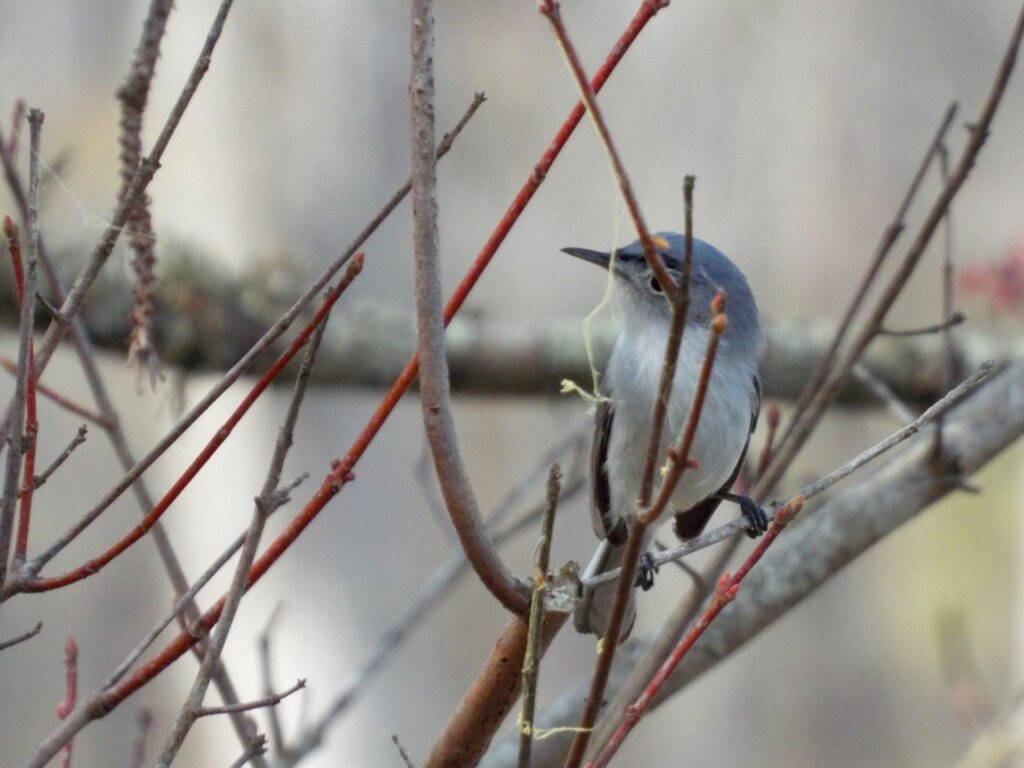
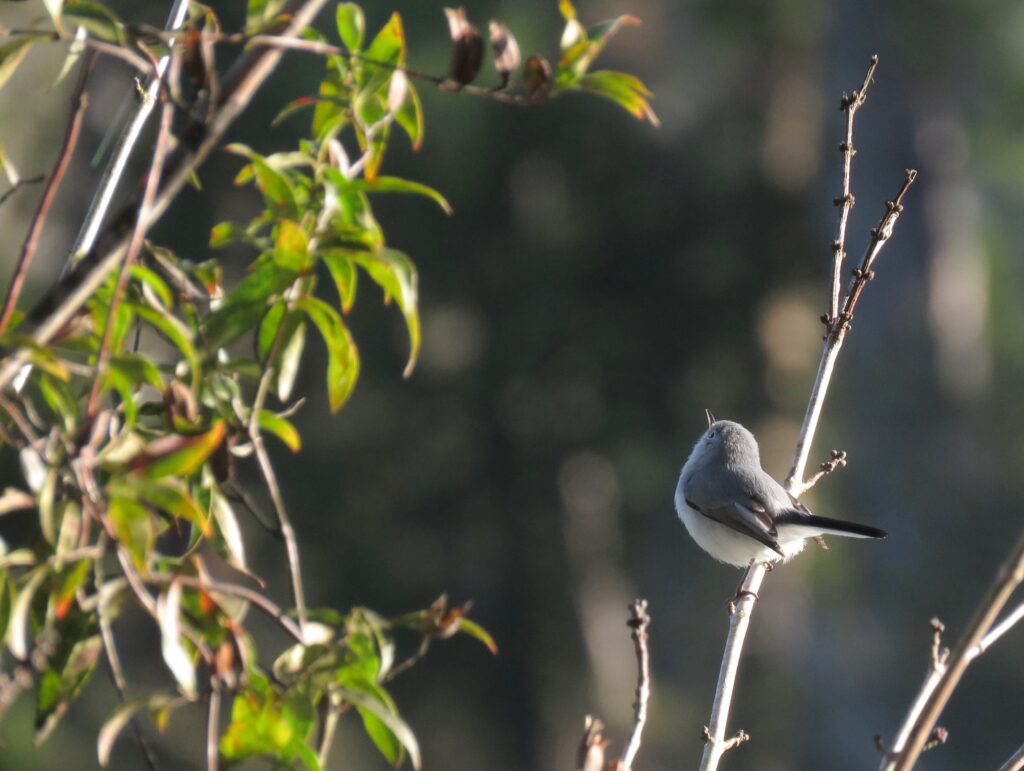
The week for Flora and Fauna Friday we have a petite and precocious songbird: the Blue-gray Gnatcatcher (Polioptila caerulea).
The Blue-gray Gnatcatcher is our only representative of the Gnatcatcher family here in South Carolina. The Gnatcatchers are most closely related to Wrens. The Blue-gray Gnatcatcher is found throughout the eastern United States and all of the Palmetto State. They’re most common throughout the warm seasons but are a year-round resident in some corners of the Lowcountry.
Blue-gray Gnatcatchers are, simply put, a wee little bird. It’s not as wee as a Hummingbird or Kinglet, but it’s sufficiently small enough to fit the bill. Their plumage is a cool white beneath with a back a shade between aluminum-blue and gunmetal-gray. A black tail with white corners and a heavy white eye-ring supply the needed accents. Males take a bluer hue in breeding season and year-round they wear a black unibrow, giving him an expression of perpetual irritation. Blue-gray Gnatcatchers have an active lifestyle and, much like Kinglets, seem to be in perpetual motion. They bounce and bound between bushes, calling all the while. Their call is a nasally plaintive whine. It’s hard to describe but easy to recognize. Blue-gray Gnatcatchers are gleaners, they move from plant to plant, branch to branch, leaf to leaf in search of any opportunities for nutritious morsels that may present themselves. Their diet consists entirely of invertebrates, but only small ones.
Their preferred habitats are moist broadleaf forests but they can be found in a broad range of ecosystems and forest types. Gnatcatchers nest in trees by building a camouflaged cup to cradle their eggs. Their nest is small, compact, cozy, and anchored to a tree branch or crook with a copious amount of spider webs. The nest is constructed of moss and grass and lined with fuzzy seeds, animal hair, and feathers. It is all then glued together with spider silk. To help blend in with the bark background, the nest is then plastered in a layer of lichen, matching it perfectly to the surrounding lichen lined limb.
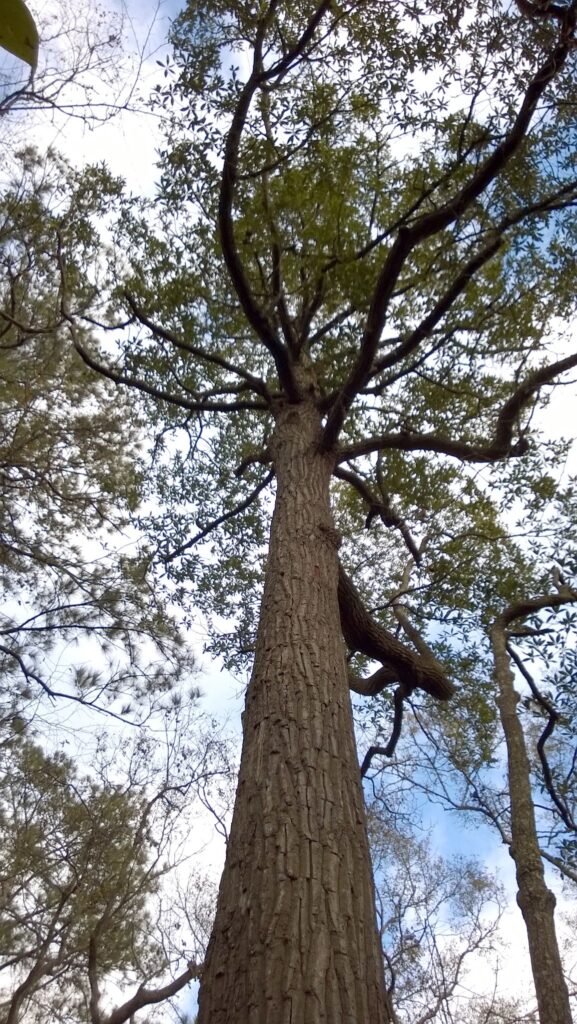
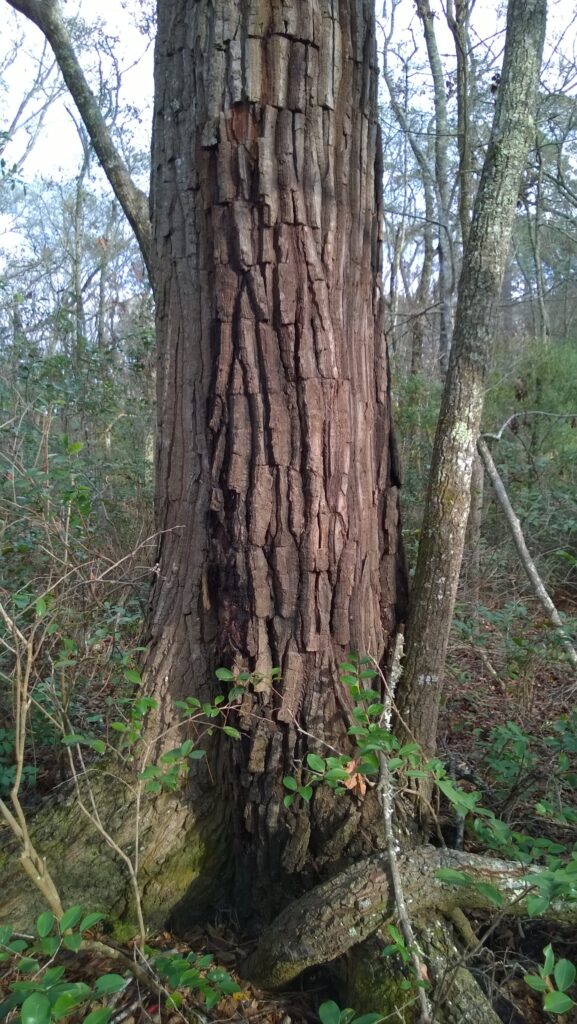
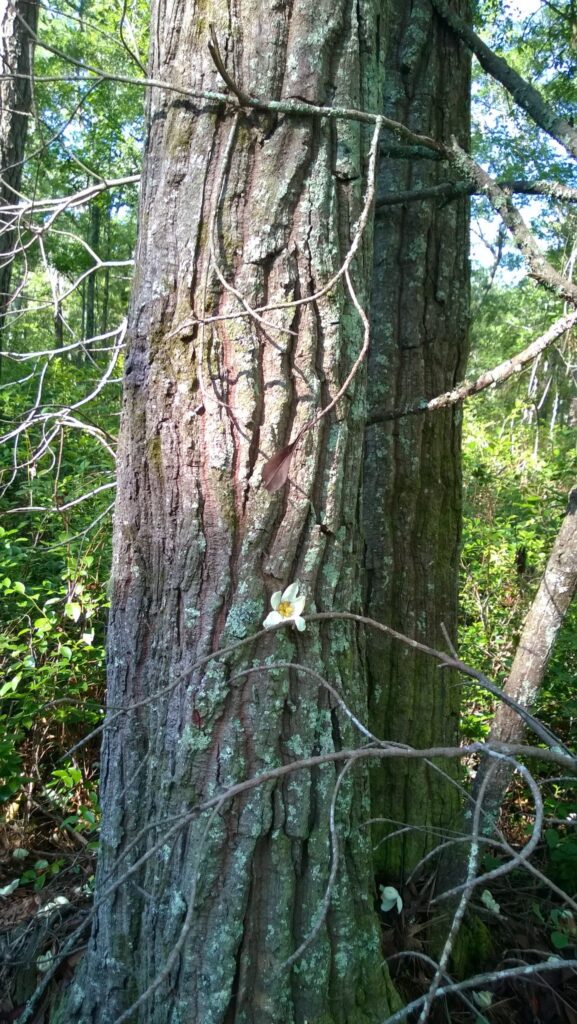
This week for Flora and Fauna Friday we have a unique and beautiful tree of the flatwoods: Loblolly Bay (Gordonia lasianthus).
Loblolly Bay is a member of the Tea family, Theaceae, and the only member of its genus found in the United States. Loblolly Bay is found across the coastal plain of the Southeast, from North Carolina to Alabama. Loblolly Bay thrives in the acidic, saturated, and poorly drained soils of our flatwoods and Carolina bays. As such, it is locally common throughout the Lowcountry where there habitats are found.
What distinguishes Loblolly Bays from our other hardwood trees is in its bark, foliage, and, most notably, its flowers. With age the bark of Loblolly Bay becomes deeply furrowed in long vertical ridges. Canyons of carmine or gulleys of gray; bark color is variable in various environments. Its leaves are reasonably sized and evergreen, a deeply enriched emerald delta beneath the basin of the bark. Floating upon this verdant expanse shines a flora flotilla. A quintessentially Tea patterned perfect flower reminiscent in size and position to a Magnolia. Five fuzzy petals of simple whiteness ring a basket of golden anthers. Much like the unrelated Southern Magnolia, this tree can reach an impressive size and its brilliantly colorless flowers act as beacons to beckon insects and admiring eyes. Flower appear at the eve of the summer solstice and linger for the following weeks.
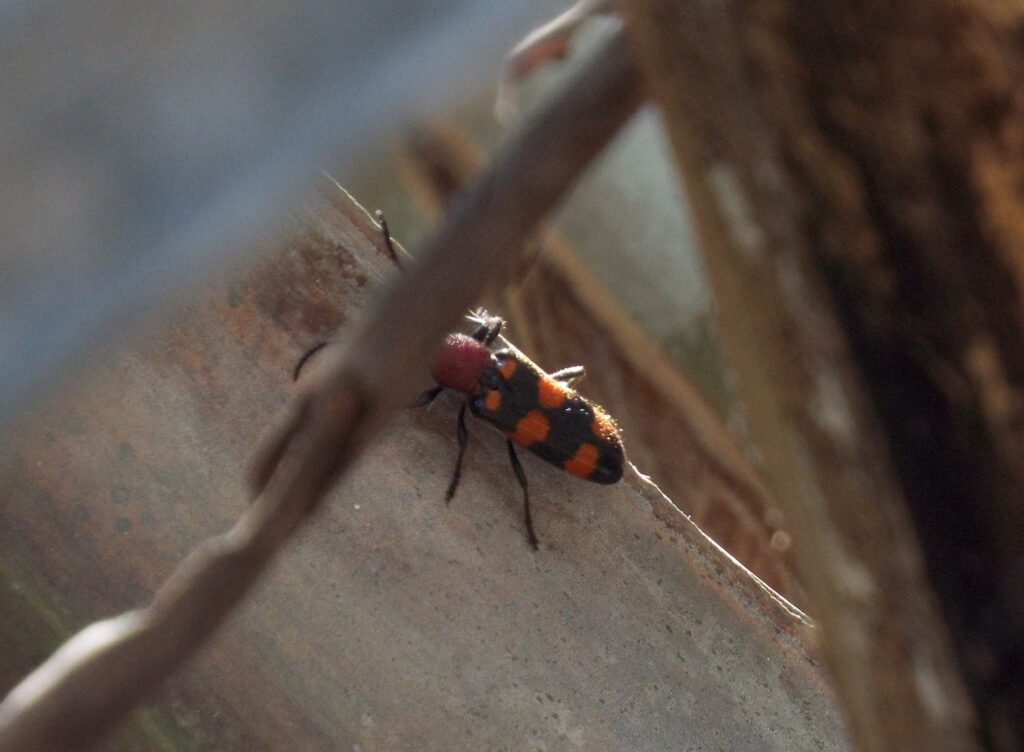
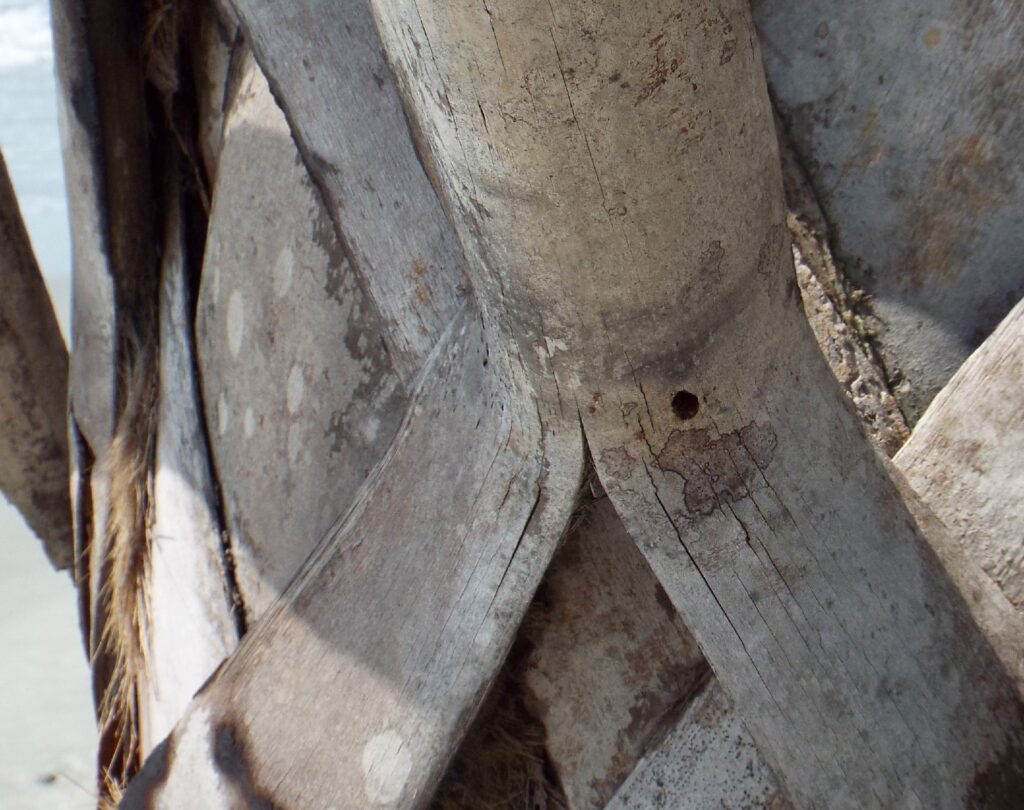
This week for Flora and Fauna Friday we have a secretive dichromatic beetle that recently made its way to South Carolina, Zagymnus clerinus. This is a critter that not much was known about until recently. I’ve studied it extensively and published my research on it a few years back. Zagymnus clerinus doesn’t have a common name but I’ve taken to calling it the Palmetto Boot Borer.
Zagymnus clerinus is a species of beetle in the Longhorn family, Cerambycidae. Longhorn beetles are so named for their prominent antennae, long and broad like the horns of a Texas Longhorn. They’re an incredibly diverse clade of insects and many of them share a similar shape, a nocturnal nature, and a taste for freshly dead wood. The Palmetto Boot Borer is about half an inch long from backend to forehead. Its body is a glossy jet-black accented by candy-orange bars and a thorax of faded-burgundy. Most longhorns are not so strikingly colored and this gives us a clue about the Palmetto Boot Borer’s ecology. Insects that want to hide are colored cryptically in mottled browns and grays. However, an insect that’s red and black is trying to catch someone’s eye. Whose eyes? Birds’ eyes. From this we can infer the primary predators of our beetle are birds, likely Mockingbirds and Flycatchers, and since these birds are diurnal, so must be our beetle. Otherwise, why would it be colorful if it only flies at night? Typically, red and black patterns warn that an insect is poisonous but, given their diet, I suspect this is just a bluff by our beetle.
The Palmetto Boot Borer feeds on Palmetto trees. However, fear not. It is not a danger to our state tree. This beetle only eats dead fronds as a larva. Females lay eggs in crevices they chew into palmetto boots. (A boot is the base of a palm frond.) Those eggs soon hatch and start boring their way into the heart of their frond. After a year or more of eating frond fibers, the grub will make its way to the edge of the boot to pupate. The following June, the beetle will break free of its tropical coffin by chewing an oval-shaped hole in the side and escaping into the sunshine. As far as we know, adult beetles don’t eat and live less than a month.
Zagymnus clerinus is interesting in that it was never recorded from South Carolina until 2007. I was unable to find any evidence of it being in the state before 1995. Nowadays, its handiwork, in the form of those elliptical emergence holes on palmetto boots, can be found throughout Charleston County. It is especially common along the North Edisto River and on Edisto Island. So where did it come from? The species is native to Florida and is found in any habitat where there are Cabbage Palmettos. Similar habitat is common throughout the Barrier and Sea Islands of South Carolina but oddly not our beetle until just recently. How did it get here then? In recent decades, residential development in the Charleston area has skyrocketed and the demand for landscape plants followed suit. I believe the Cabbage Palmetto’s prowess as an urban landscape tree fueled its nursery cultivation in Florida. Those nurseries packed with palmettos were an equally suitable nursery for the Palmetto Boot Borer. When those nursery palms were brought to Charleston, the beetles came along for the ride by the thousands. From there it was just a matter of time before those out of state beetles made the jump into our native stands of Palmetto and established a foothold. Today the Palmetto Boot Borer is here to stay but luckily the Palmettos don’t seem to mind too much.
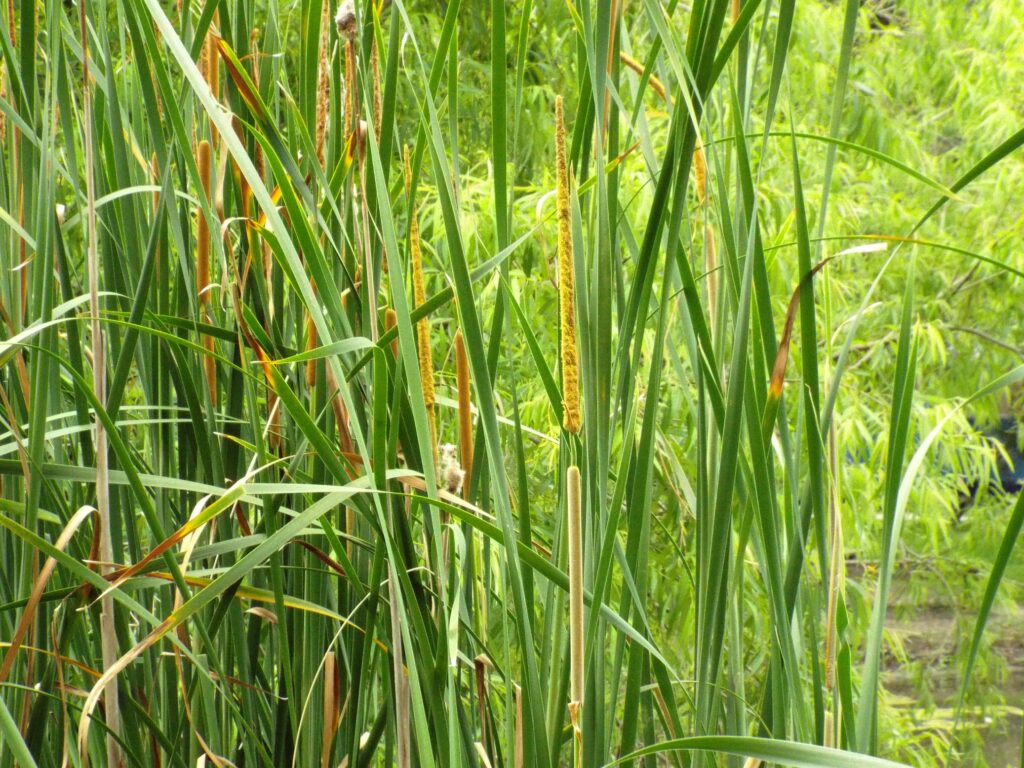
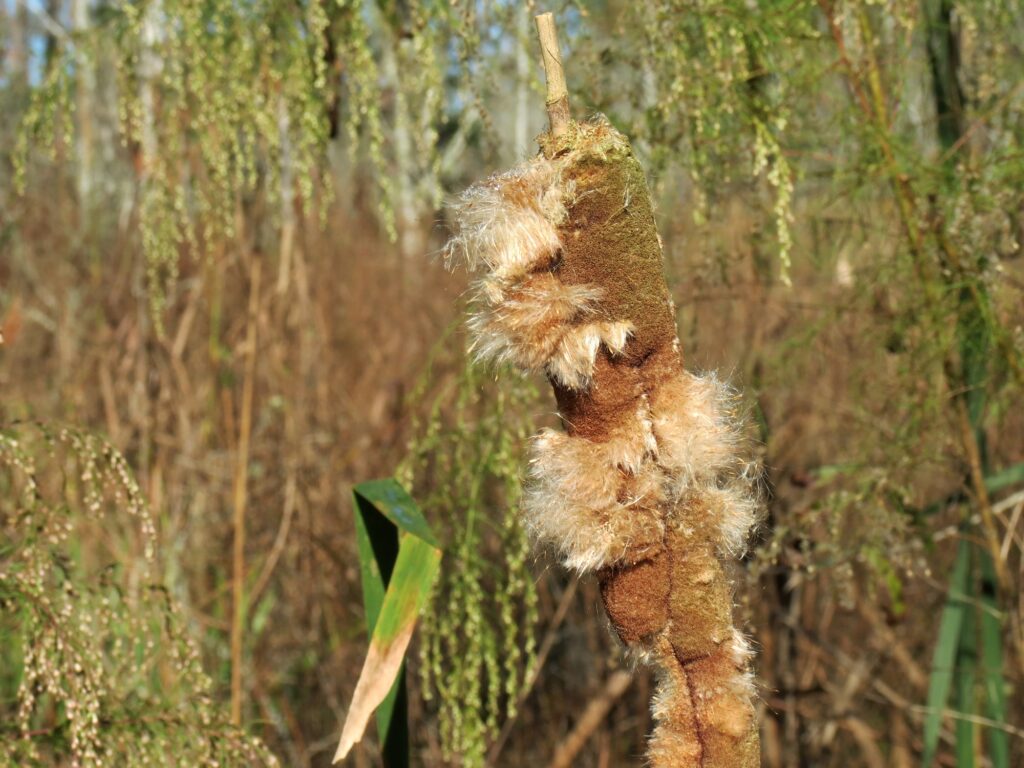
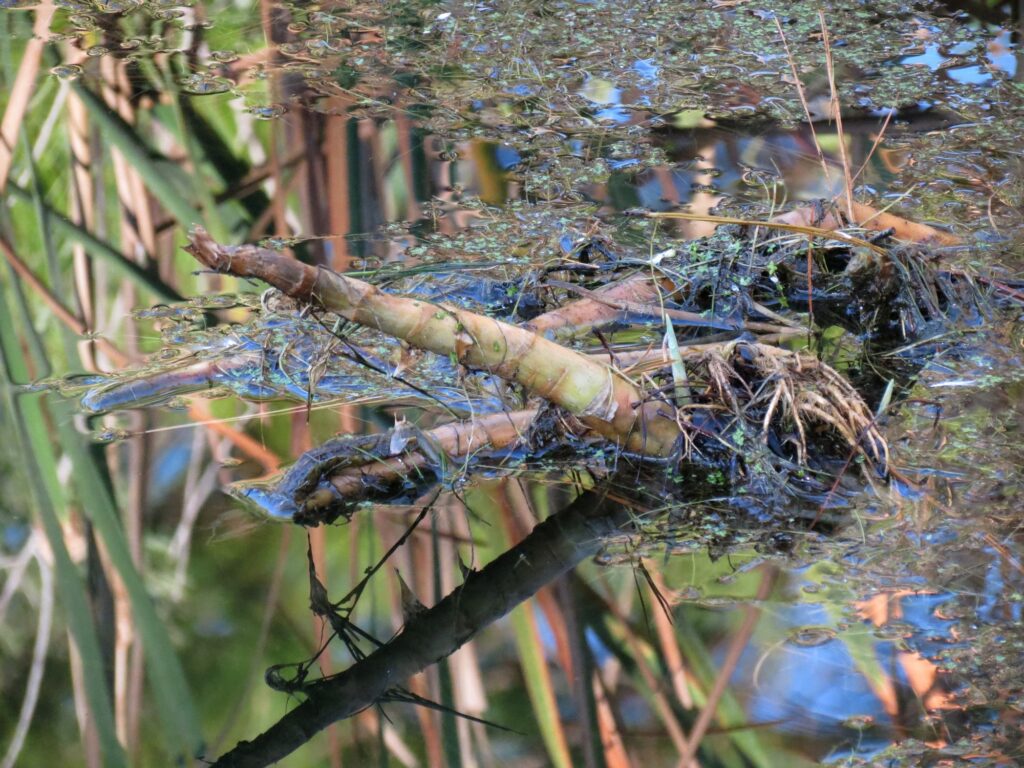
This week for Flora and Fauna Friday we have the wild corndog: the Cattails of Genus Typha.
Long tongues of green with glaucous sheen lap the air over the interstice of water and land, straining to taste the sun and feel the breeze. It lifts an offering on high, one by one its colony of clones sacrifice their labors to the bright above. Loaves of love its community comes to offer into the grip of the wind. A chance for their future to be flung forth into the world, to escape this mire they’ve found themselves confined to and confine itself to another a ways away. The Cattail wades its life away content in its yesterday but not in its future.
Cattails are a staple feature of freshwater marshes throughout the United States but they have a fair bit more competition for murky homes here in the Southeast. Here on Edisto we have three species: Common Cattail (Typha latifolia), Southern Cattail (T. dominigensis), and Narrowleaf Cattail (T. angustifolia). Common Cattail is not surprisingly the most common species and is expected in nearly every sunny freshwater system of the Lowcountry. It’s tall with a broad leaf and with male and female flower parts that butt against each other. Southern Cattail is much the same in appearance to Common Cattail but with leaves a few feet taller and a few millimeters less broad, in addition to flower parts that are soundly disconnected. Its preference is strongly for brackish water and can crop up on the outskirts of our tidal rivers. Narrowleaf Cattail is not a native to South Carolina. Its origin is uncertain and it is likely of European descent. Regardless, it’s here to stay as it has carved out a niche in salt seasoned ditch-work and brackish marshes. As its name implies it has leaves much more narrow, as well as shorter, than its larger congenerics. Its flowers are gapped, and narrow, to boot.
Cattails are a large grass that spreads by stolons, or underground stems. It spreads fiercely in shallow marshes along ponds and rivers. Lands where wet is absolute but the degree of wet is middling and variable. Those stolons are stuffed with starch and edible as well. Its leaves are long and narrow, uniform in their length for feet on end as they tower upward above mud. These leaves are thick and hollow, honeycombed within, which lends them their vertical stability and keeps them afloat in times of flood. Like most wind pollinated grasses, their flower is a two piece affair. It is a tall spike that rises just beyond the sea of leaves. The top is first to mature, with a thin needle of pollen to saturate the air. Shortly behind, the broader sleeve of female flowers captures said windborne pollen with the hopes of it being of foreign origin. As the male pieces wither away the female cylinder swells and darkens to a ruddy complexion. It is a fruit that is best described as a corndog on a bamboo skewer. (No getting around that literarily.) Come winter the breading peels away from our mystery meat shish-kabob to reveal it nothing but breading. A breading of cottony seeds instead of meal. As can be surmised this corndog is less than edible and will quickly lead to cottonmouth. However, the fresh male flowers at the extreme tip are edible yet the other cottonmouth might run you off on attempt to collect some. This compressed seed head quickly disintegrates in the teeth of the biting winter gusts that slice across the marsh and scatter every which way into the atmosphere. The pilgrim progeny let loose to assimilate into the marshes of the Lowcountry.
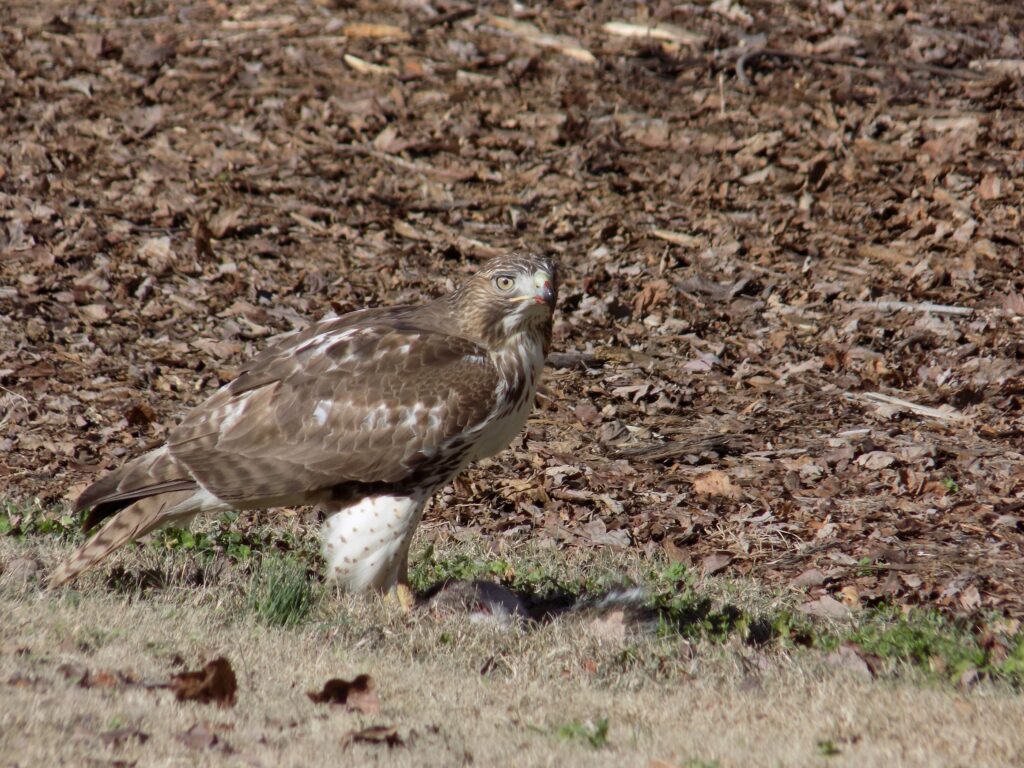
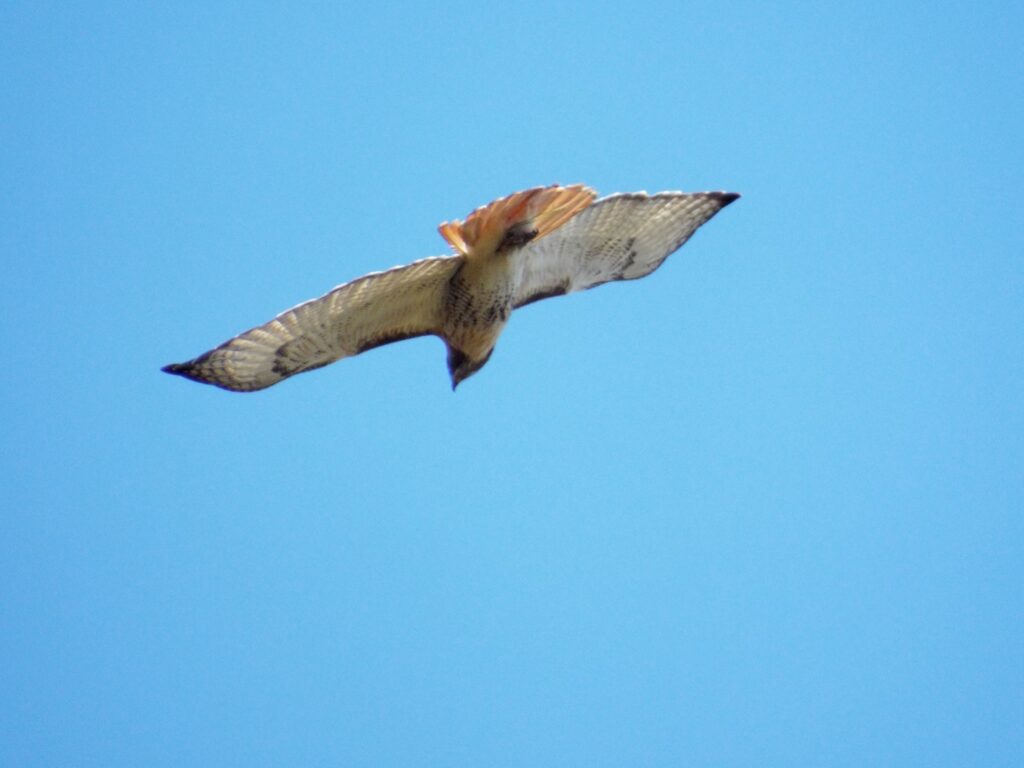
This week for Flora and Fauna Friday we have a high flying easy to ID raptor: the Red-tailed Hawk (Buteo jamaicensis).
An adult Red-tailed Hawk is one of our easiest raptors to pick out of the sky on any sunny day. That ember-orange plume of tail feathers trailed behind their stocky body and broad wings gives them away with just a glance. When perched, their milky-white throat and underside, brown shoulders, and a patchy band across the belly set them apart from the front. The Red-tailed Hawk is our largest hawk and they’re plenty common year-round across South Carolina. They hunt in open areas and perch high above the ground. You’ll most often see them circling high in the air over fields and clear-cuts. Their call is distinctive as well, a long hoarse scream. A sound Hollywood has long misattributed to the Bald Eagle in TV and films.
Like all raptors, the Red-tailed Hawk is an ambush predatory that uses its keen eyes and hooked claws to drop on prey from above. Their diet is predominantly rodents and other small mammals. They are a major predator of Squirrels, Rabbits, Rats, and Mice. They will also hunt snakes and take out Quail, Ducklings, and Blackbirds. Because of their predatory nature, you’ll commonly see Hawks being chased and harassed by Crows, Kingbirds, and Mockingbirds who see them as a threat to their own peace and quiet.
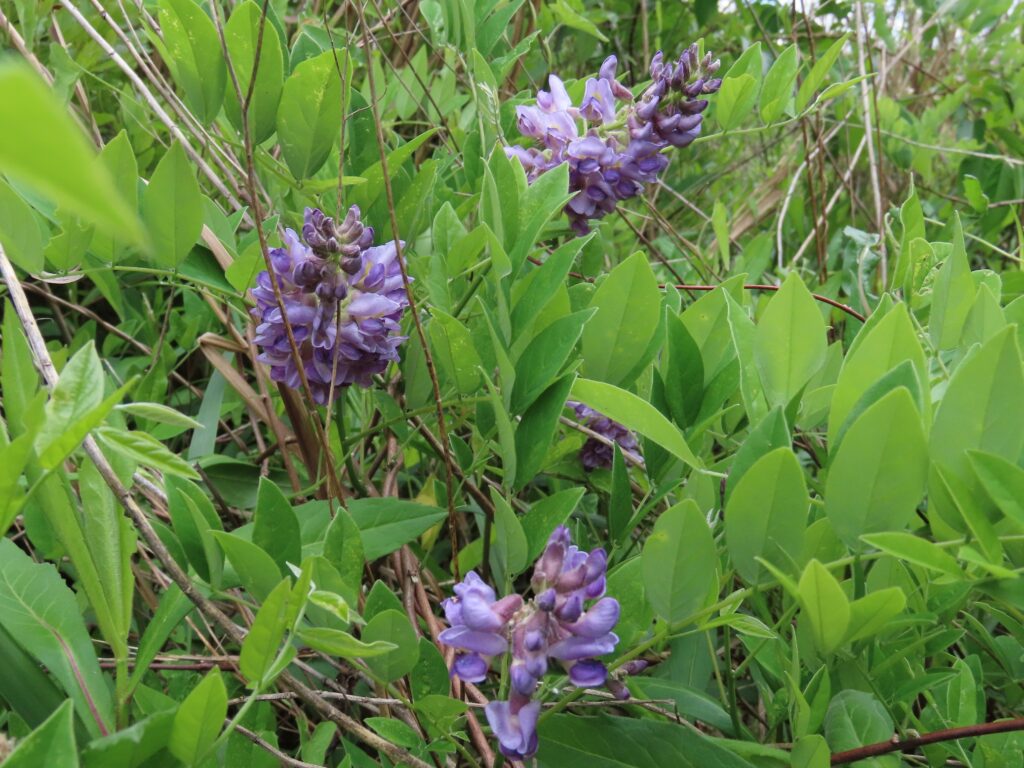
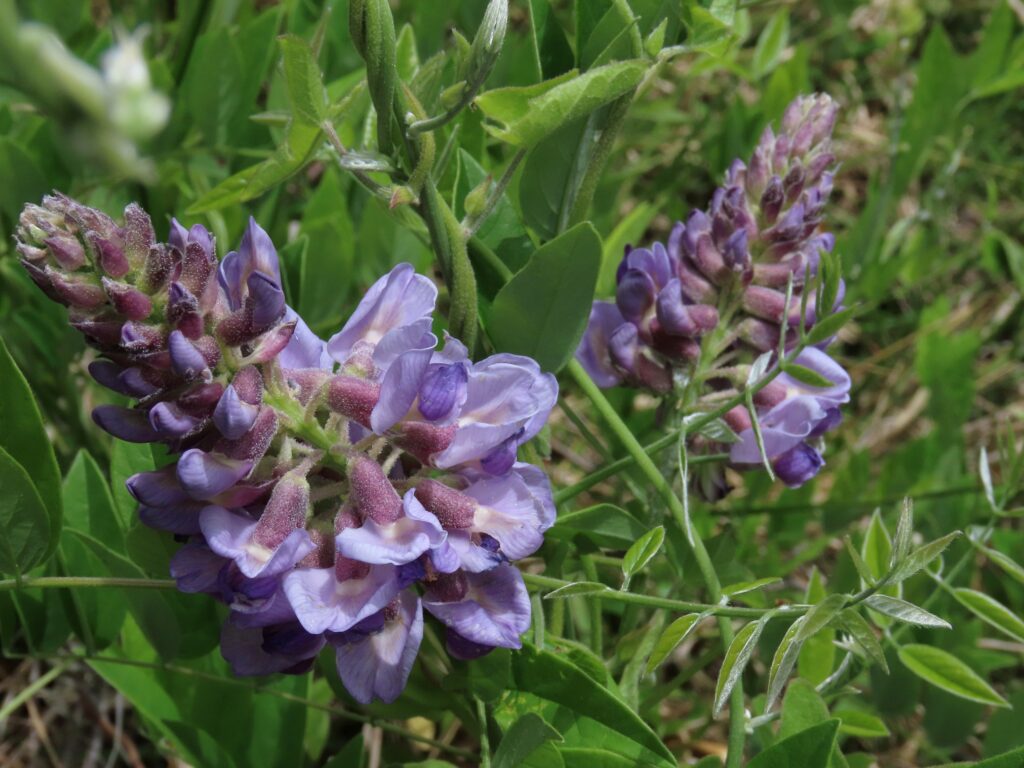
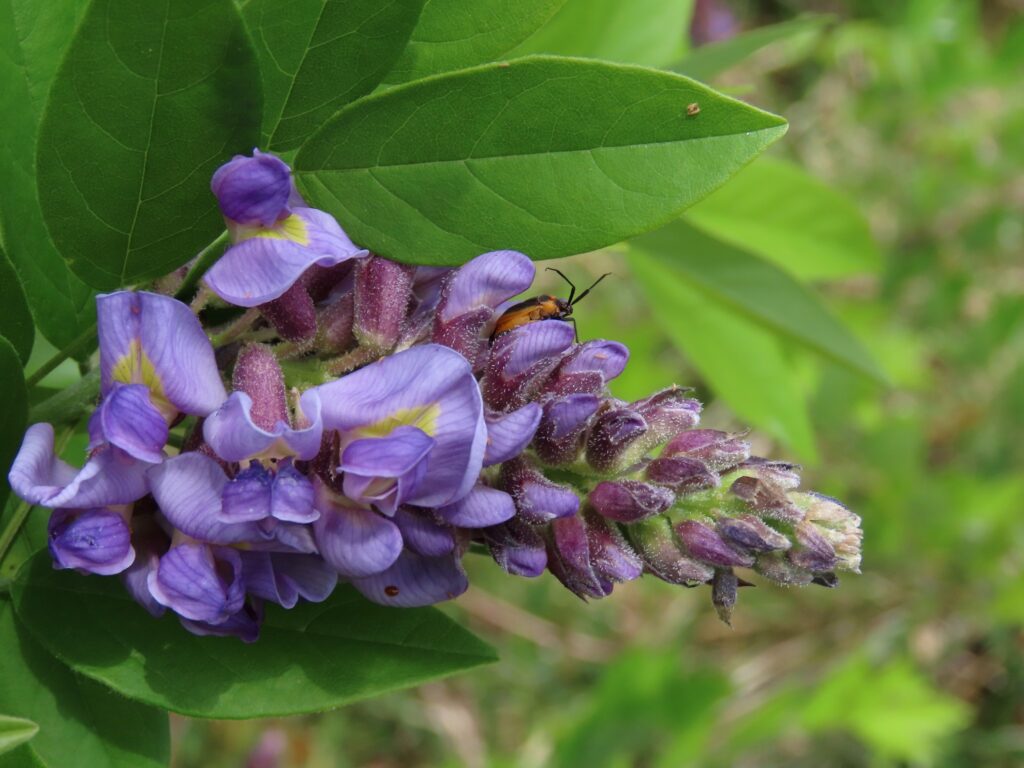
This week for Flora and Fauna Friday we have the more reserved relative of a certain attention-hungry, pastel-purple pendulous plant: the American Wisteria (Wistera frutescens).
I’m sure we’re all familiar with the truly awesome display we’re treated to each March. The Chinese Wistera explodes into view with a roaring blaze of violent violets and magnificent magentas. A floral inferno that swallows up tree lines and rains pink ash down upon us for weeks. For me it’s a sincerely bittersweet occasion. I marvel at the inarguable beauty of it all but recoil at the realization that I’m witnessing the coat of arms for a conqueror, an invader laying siege to our native plants. Chinese Wisteria (Wisteria sinensis), as the name implies, is not a native plant. Its origins are in temperate China. It made its way to the United States on its merits as an ornamental and has been campaigning through the countryside ever since. Without its natural rivals to keep it in check, its toxic flesh, nitrogen fixing roots, and vigorous twining vines enable it to engulf shrubs and trees uncontested.
As a gardener, I’m envious of Chinese Wisteria’s aesthetic fortitude but repulsed by its unsavory behaviors. Luckily, I have an alternative. A less passionate but no less pretty cousin who is far better mannered, our native American Wisteria. With its pinnate emerald-green leaves, supple ash-gray twining vines, and paler purple locks packed with flowers, there’s no mistaking it as anything but a Wisteria. American Wisteria is a twin for Chinese wisteria but tends to more reserved in many traits. Flowers are less numerous, with fewer per cluster more tightly packed together and a paler complexion. Leaves are smaller and bluish in hue. Vines are shorter and thinner, growing more slowly. American Wisteria is scare but far ranging throughout the Lowcountry. They love rich soils with good drainage but plenty of moisture and seem to tolerate periodic salt intrusion. If you have Chinese Wisteria in your yard or are planning a garden, consider substituting in our more mild-mannered neighbor instead.
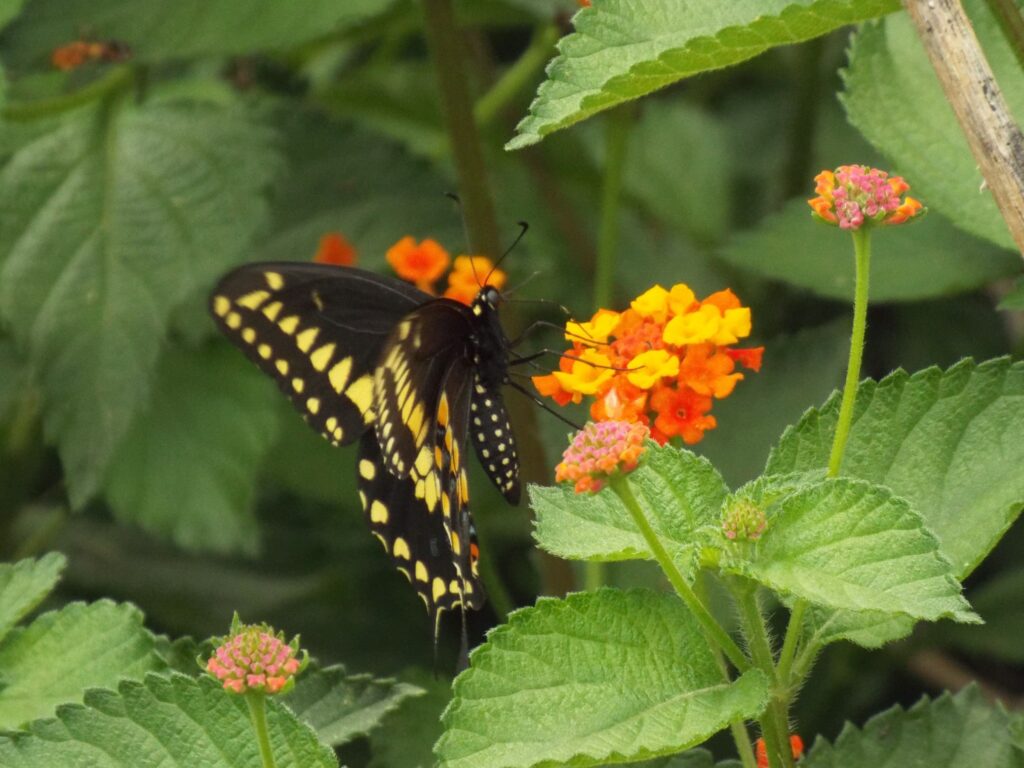
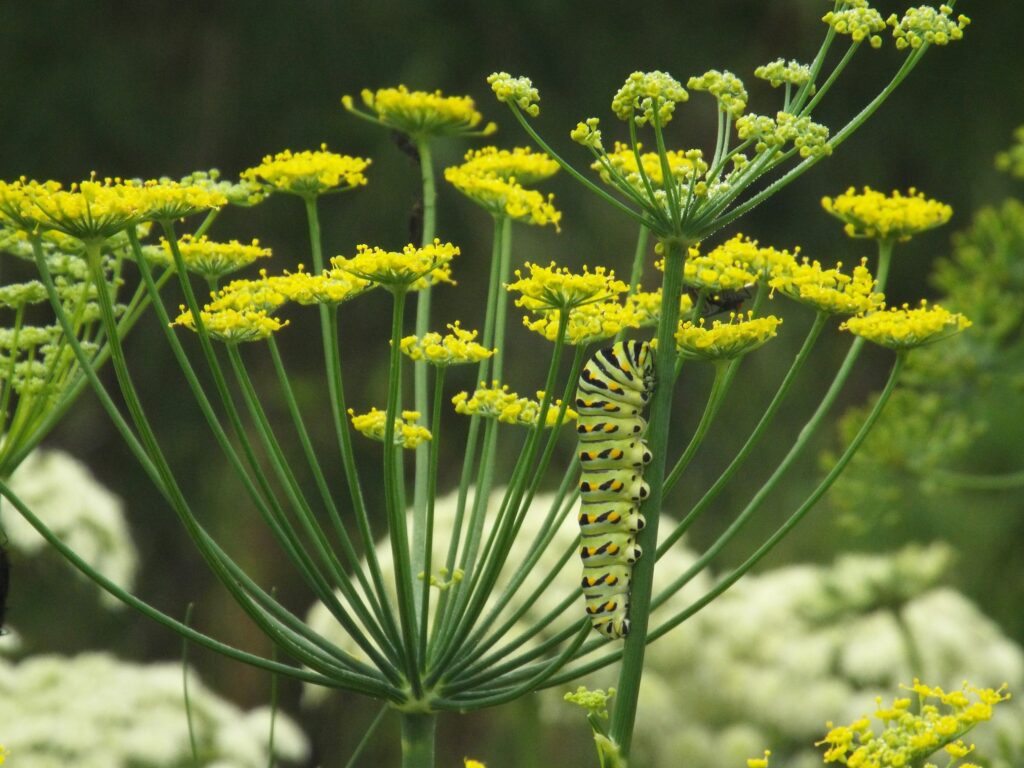
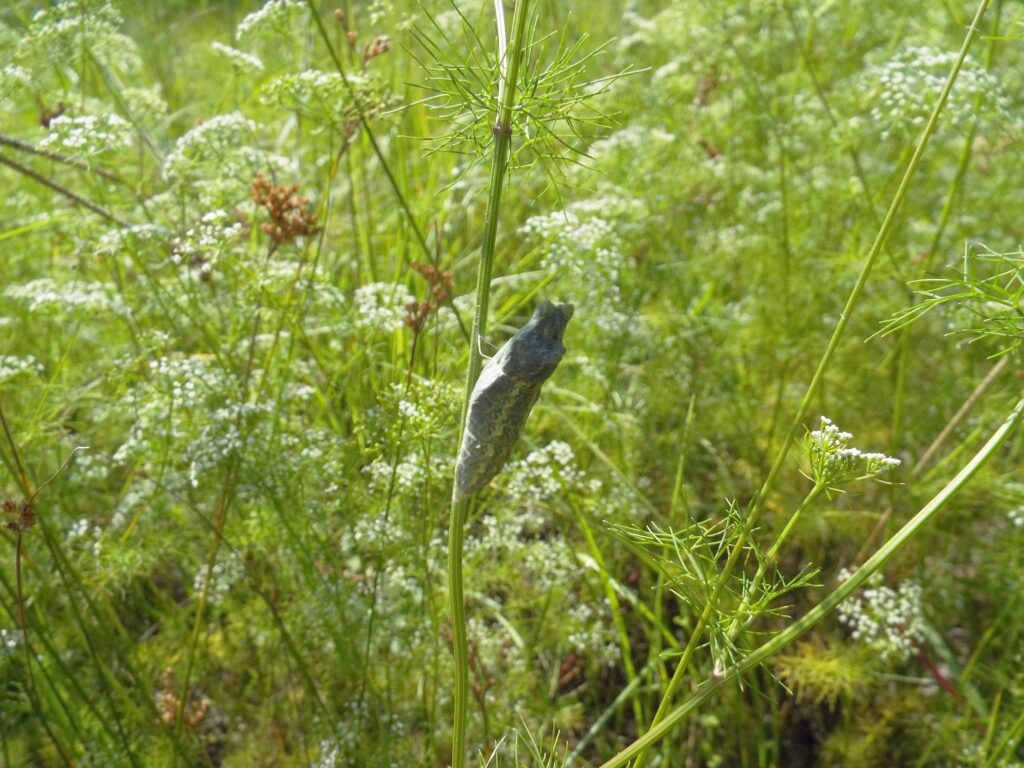
This week for Flora and Fauna Friday we have everybody’s favorite garden butterfly, the Black Swallowtail (Papilio polyxenes).
The Black Swallowtail is our smallest Swallowtail and the most numerous one in spring. As the weather warms their numbers dwindle before they all but disappear until the following year. They fly low and quickly through meadows, fields, and lawns. Their wings and bodies are mostly coal black. Males flaunt two tightly packed rows of silver-yellow spots down the borders of their wings. A feature accented with a brushing of iridescent sky-blue sandwiched between row on the hindwings and a pair of orange eyespots staring out from the inside corners. Females are more subdued with their rows of spots far reduced, replaced by a wave of cyan gloss across the lower hindwings. Both sexes have bodies lined in strings of pastel-yellow polka dots.
Black Swallowtails are a favorite of elementary school science classes and back porch terrariums. That’s because they lay their eggs on several common species of herbs and vegetables. This makes them a common site in vegetable gardens and means they’re easy to care for in captivity. In the garden their black-banded, yellow-dotted, granny-smith-green, corrugated caterpillars voraciously munch away at Carrots, Parsnips, Parsley, Fennel, Celery, and Dill. In the wild they eat species including Marsh Parsley, American Wild Carrot, Spotted Waterhemlock, and Mock Bishopweed. When harassed, the caterpillars will extend a forked, foul-smelling appendage from their forehead and try to rub it on the attacker. This set of tangerine antlers are called osmeterium and they’re a fairly effective defense against predatory insects. However, they don’t do much to ward off curious schoolchildren. When the caterpillars have plumped up and eaten their fill, they’ll leave their buffet to find a shady spot to nap for a few months. Here they transform into a pupa. They will either emerge within a few months or wait for more than half a year to appear at the tail end of the following winter.
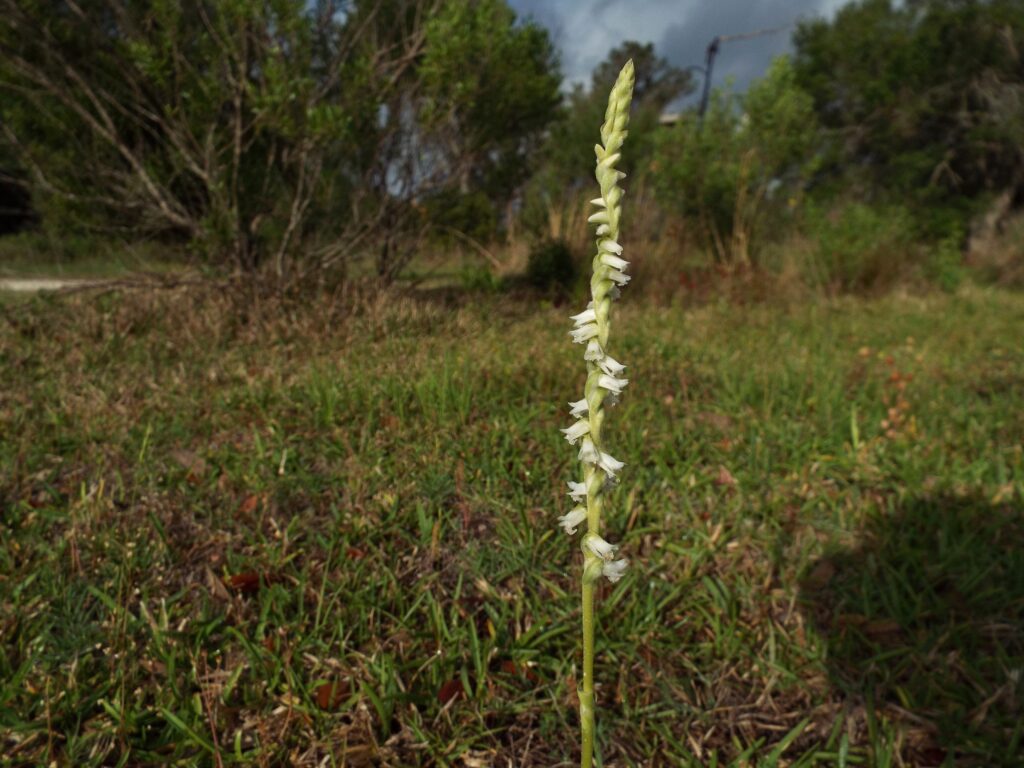
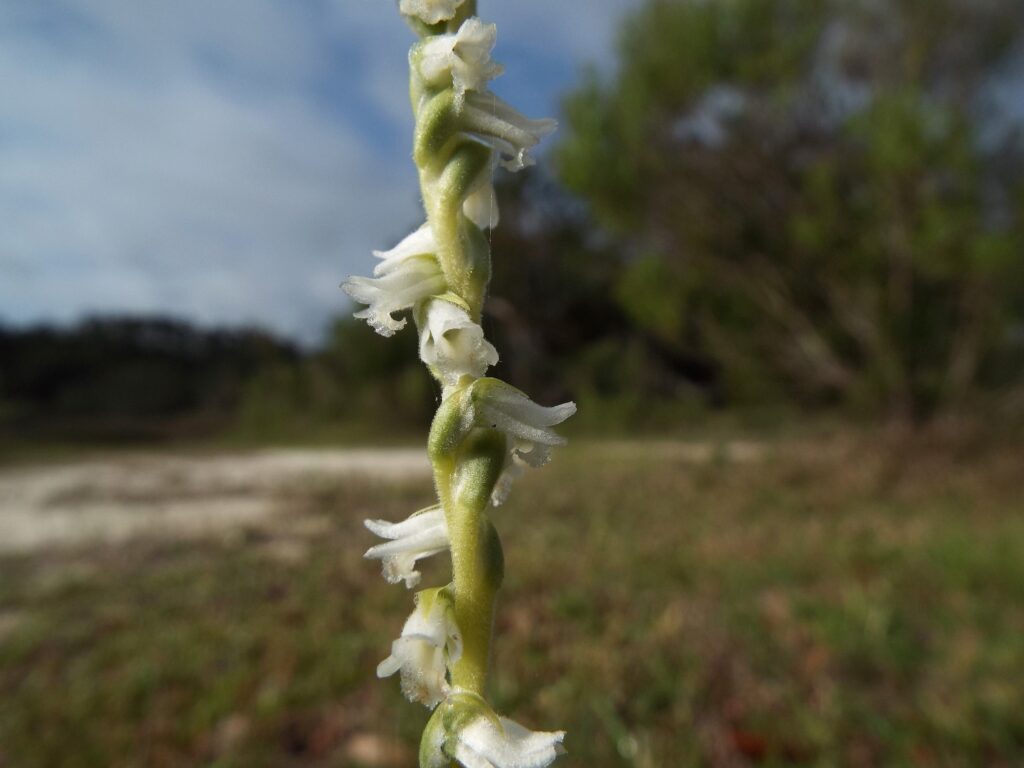

This week for Flora and Fauna Friday we have some wiry white wildflowers of the Orchid variety, the Ladies’-tresses of genus Spiranthes.
Ladies’-tresses are by far our most widespread and prolific orchid here in the Lowcountry. They can be found in a wide variety of habitats where moist, poorly-drained soils abound. Places like meadows, roadsides, glades, and lawns are common favorites. They grow singly but are rarely alone, with nearby neighbors soon to make themselves known. There are at least five species from Spiranthes common to Charleston County: Spring Ladies’-tresses (S. vernalis), Greenvein Ladies’-tresses (S. praecox), Nodding Ladies’-tresses (S. cernua), Marsh Ladies’-tresses (S. odorata), and Lacelip Ladies’-tresses (S. laciniata). However, with the exception of Greenvein, I’ve never been great at telling them apart. So we’ll leave today’s vignette at the genus level.
Ladies’-tresses spend most of the year as a small rosette of grassy-leaves intermixed between the surrounding grasses and forbs. They’re quite innocuous and hard to spot until spring. After the April showers comes these May flowers. Ladies’-tresses produce a single flower stalk to a height of 12 to 18 inches. This stalk is ringed at the peak in a spiraling ascent of flowers. Each flower is pearl-white and some species are accented in green or yellow. The flowers are small with mirrored symmetry and a tiny mouth, the lower lip with a wavy margin and the top usually up-ticked. A pair of narrow, pointed petals straddle each side. A very reserved display overall.
Although their flower is mostly unremarkable, what’s most remarkable about this Orchid is its hardiness. Orchids are known for being finicky plants that succeed only under very specific conditions. Ladies’-tresses are no such thing. They thrive in lawns and gardens around the state by tolerating poor soils, trampling, and regular mowing. Maybe if you’re lucky, they’re already growing peacefully in your yard, just like they are in mine.
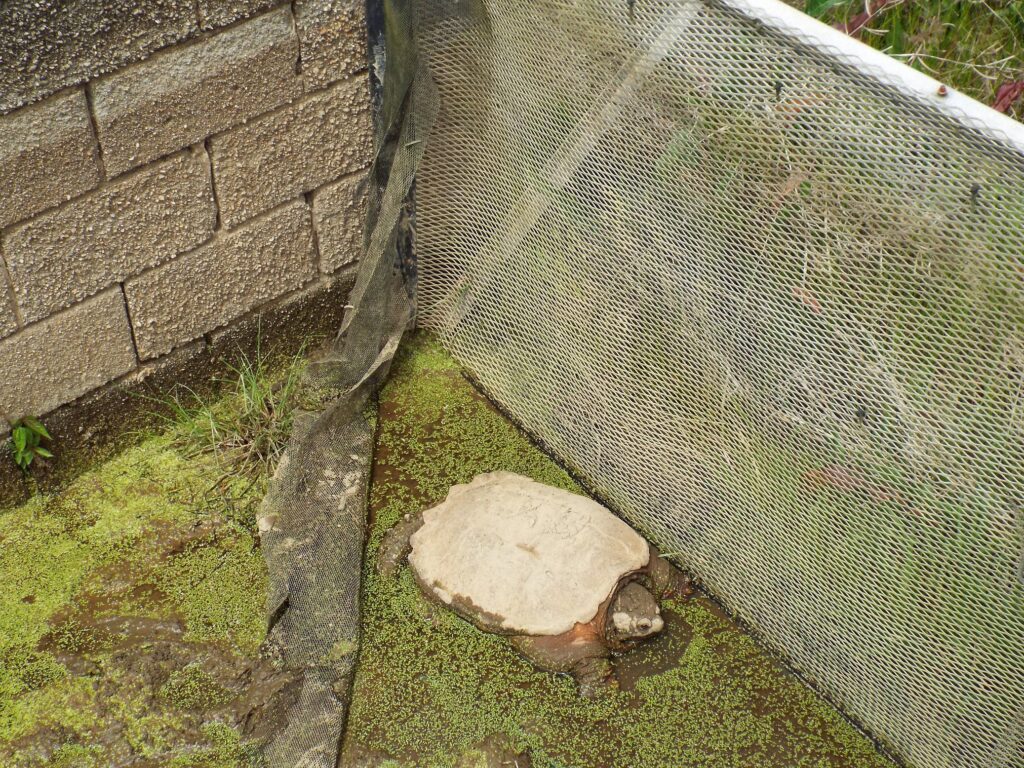
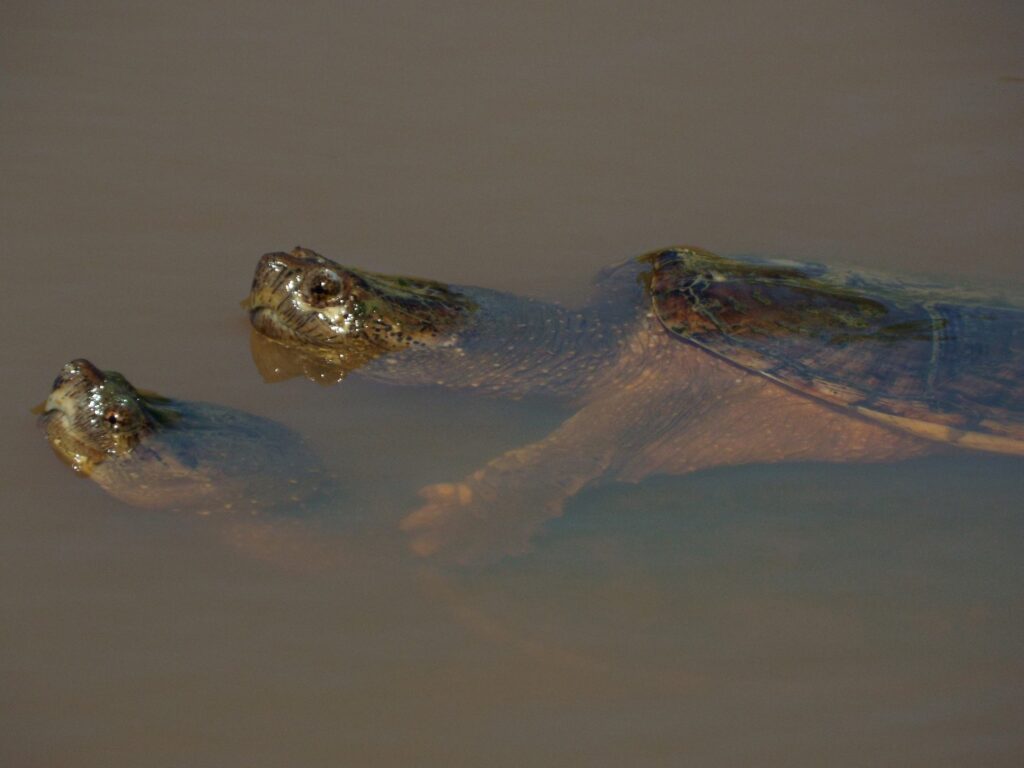
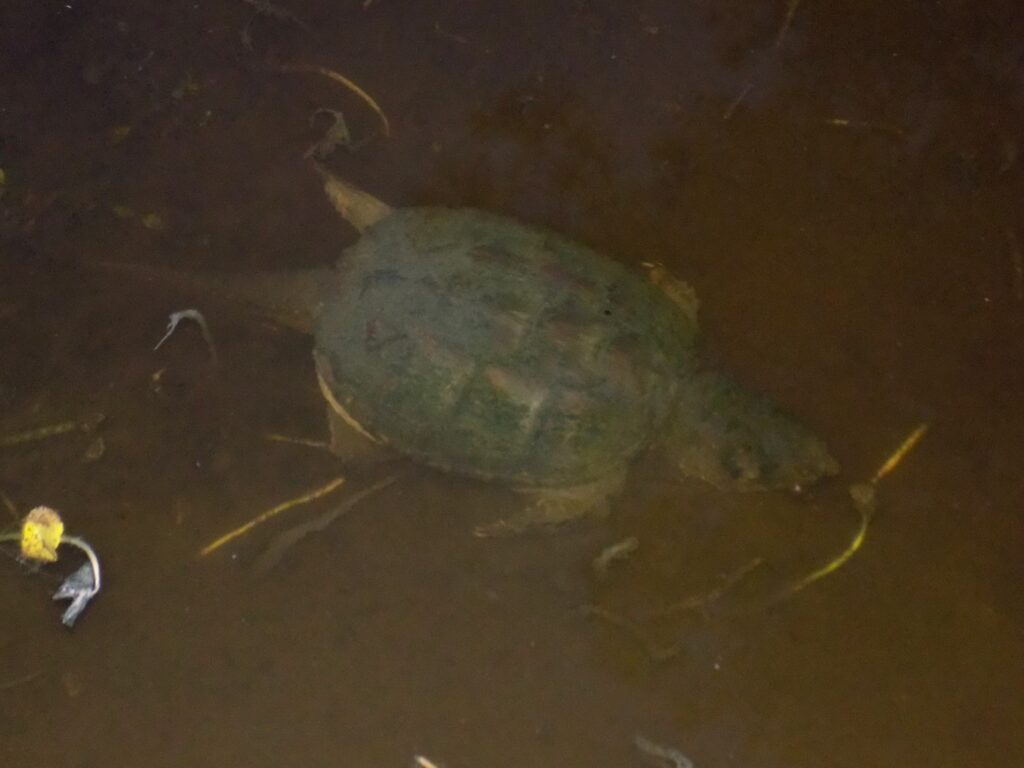
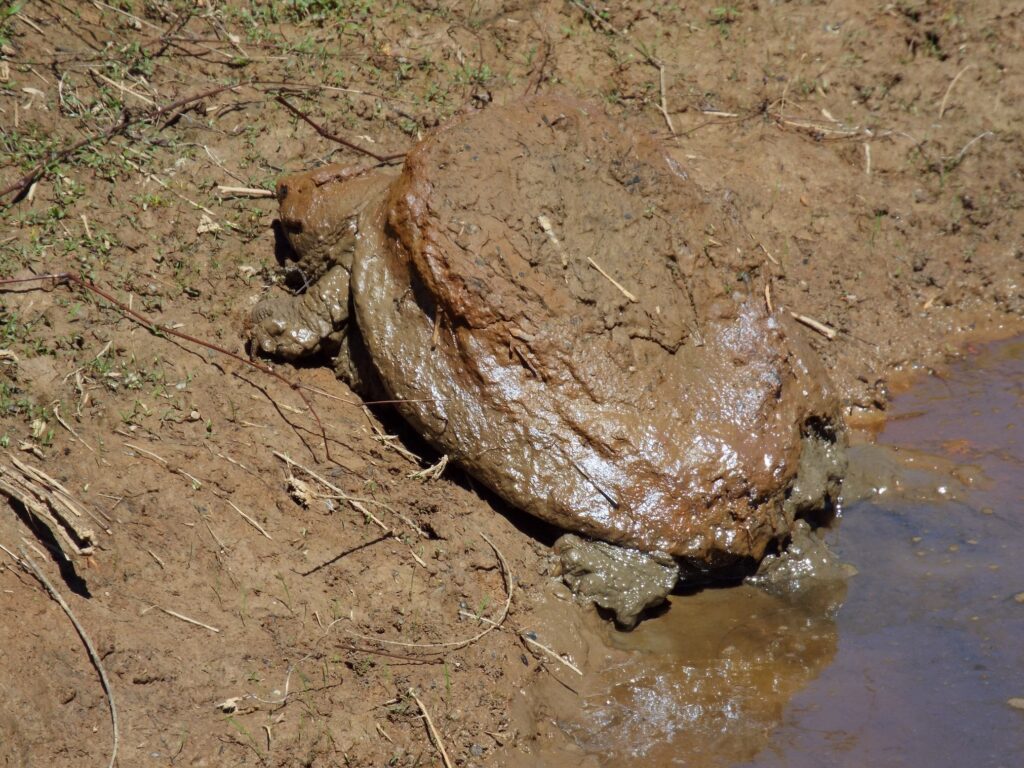
This week for Flora and Fauna Friday it’s a prehistoric looking predatory turtle: the Eastern Snapping Turtle (Chelydra serpentina).
The Eastern Snapping Turtle is our largest non-marine turtle here in the Lowcountry. They can exceed 50 pounds in weight and a foot and a half in shell length but are usually closer to 20 pounds and a foot long at maturity. Snapping Turtles are easy to ID at any distance. Their shells are a clayey-gray to murky-brown with three shallow keels down the back and are often coated in a layer of mud or algae. Snapping Turtles always look too big for their britches (and act like it too) with their wrinkly gray skin pouring out of their shell. In my opinion, from the front they look like they’re wearing an oversized wool sweater, turtleneck of course. They have wide webbed feet with long claws, broad shoulders, and the long, scale-studded tail of a dragon.
Snapping Turtles are an aquatic species adapted to shallow waters. They can be found in almost every significant body of standing water. Snappers are omnivorous but preferentially feed on meat and arthropods. They will eat anything and everything small enough that enters the water. Snakes, crayfish, ducklings, fish, worms, frogs, carrion, smaller turtles, you name it, it’s on their menu. Snapping Turtles are rarely seen on land and they hardly ever bask. However like all aquatic turtles, they are most often spotted crossing roads in spring and summer as they move between wetlands or seek nesting habitat.
Snapping Turtles are best known for their bad attitudes. If you’ve ever tried to remove one from a swimming pool or tried to help a little old turtle cross the road, you know what I’m talking about. It’s an event that most often involves a shovel, a bucket, an audience, and a lot of hollering. When approached, a Snapping Turtle out of water will assume a bulldog stance, turn to face you, and then proceed to mercilessly bite anything that gets within 6 inches of its face. As mentioned before, they’re too big for their britches. So they can’t retreat into their shell like a normal turtle. In order to compensate for their excess of heft, they’ve become violent little buggers.
However, there’s a trick to safely and efficiently moving a Snapping Turtle. If they’re small enough, you can stick your hands above their hind legs, palm up, and pick them up by the shell. If they’re a biggun, you have to run around the back of them, put your hands the same as before, but then walk them like a wheelbarrow out of the way. Alternatively, you can try to sandwich their back-half between two hands to lift them. However, never pick up an adult Snapping Turtle by its tail, you can damage their spinal cord that way. Also a word of caution, don’t try to pick up a Common Snapping Turtle in the chainsaw hold that folks use on Alligator Snapping Turtles. Common Snappers can, and will, still bite you.